What to do when u have migraine. 7 Tips to Ease Migraine Pain
What can you do when you have a migraine? How can you reduce migraine pain and symptoms? Discover 7 helpful tips to ease migraine pain.
Retreat to a Dark, Quiet Room
Many people with migraines experience sensitivity to light and sound, which can exacerbate symptoms. Research shows that exposure to light activates certain light-sensing cells in the eye, triggering pain-transmitting pathways. Retreating to a dark, quiet room can provide relief by reducing stimulation of these pathways. Additionally, getting some sleep during a migraine attack may help, as the chemicals released during sleep can ease pain.
Apply a Warm or Cold Compress
Applying a warm or cold compress to the forehead or back of the neck can provide relief for migraine sufferers. Cold compresses have a numbing effect, distracting the brain from the migraine pain, while warm compresses can help relax tense muscles. It’s important to protect the skin by using a cloth between the compress and the skin.
6.jpg)
Stay Hydrated
Dehydration is a common migraine trigger for about one-third of people who experience migraines. Staying well-hydrated, by drinking water or flavoring it with lemon, lime, or a small amount of fruit juice, may help prevent or shorten migraine attacks. Aggressive hydration when a migraine is setting in may also be beneficial.
Consider Massage
Massage can help relax muscles and reduce stress, which is another common migraine trigger. However, it’s important to note that some people with migraines may be sensitive to touch and find that massage exacerbates their symptoms, especially if they are experiencing allodynia, a condition that makes even normal touch painful.
Practice Mindfulness Meditation
Stress is a major trigger for migraines, and mindfulness meditation can help ease stress and anxiety. By focusing on the present moment and your breath, mindfulness meditation can help you respond better to stress and potentially manage the overall burden of migraines, including improving disability, quality of life, and depression.

Inhale the Scent of Lavender
The calming scent of lavender essential oil may have a soothing effect and help reduce stress and anxiety, which can contribute to migraines. Research suggests that lavender oil can be an effective complementary therapy for migraine relief.
Explore Acupressure
Applying pressure to certain points on the body, known as acupressure, may help alleviate migraine symptoms. This ancient practice is believed to work by stimulating the body’s natural pain-relieving mechanisms and promoting relaxation. Some studies have found acupressure to be a promising complementary treatment for migraines.
Can Migraine Relief Be Achieved Without Medication?
Yes, while medication can be an important part of migraine management, there are several non-pharmacological interventions that can provide relief. The tips outlined above, such as resting in a dark, quiet room, applying temperature therapy, staying hydrated, and practicing stress-reducing techniques like meditation and aromatherapy, can all help ease the pain and discomfort of a migraine attack. These drug-free approaches can be particularly useful for those who don’t respond well to medication or want to explore complementary therapies.

How Effective Are These Non-Medication Migraine Remedies?
The effectiveness of these non-pharmacological migraine remedies can vary from person to person, as individual responses and triggers can differ. However, research suggests that many of these interventions, such as rest, temperature therapy, and mindfulness meditation, can be quite helpful in managing migraine symptoms and providing relief. While they may not completely eliminate the migraine, they can make the experience more manageable and potentially shorten the duration of the attack.
Can Combining Multiple Migraine Relief Strategies Be Beneficial?
Yes, combining multiple non-medication migraine relief strategies can be more effective than relying on a single approach. For example, someone experiencing a migraine may find that resting in a dark, quiet room while applying a cold compress and practicing mindfulness meditation provides more comprehensive relief than any one of these strategies alone. By addressing multiple aspects of the migraine experience, such as pain, sensitivity to stimuli, and stress, a multifaceted approach can be more successful in alleviating symptoms.

7 Tips to Ease Migraine Pain
When a migraine attack sets in, all you want is relief, which is where medication comes in — for some people. But is there anything else you can do to help shorten the attack or make the symptoms more bearable until the medication starts to work?
If you’re in need of migraine first aid, try the following interventions. Most are free and don’t cause side effects.
1. Rest in a Dark, Quiet Room
Many people with migraine report sensitivity to light and sound, which can make things worse. According to a review published in July 2021 in The Journal of Pain, the pain caused by light can be traced to a group of light-sensing cells in the eye called intrinsically photosensitive retinal ganglion cells (ipRGCs). They help maintain sleep-wake cycles and pupil response to light.
Exposure to light activates the ipRGCs and pain-transmitting cells, spanning several minutes. Research suggests this may be why headache pain gets worse in the light and improves after 20–30 minutes in the dark.
Go to a room that’s dark and quiet, says Janine Good, MD, an associate professor of neurology at the University of Maryland Medical Center in Baltimore. Even better, try to get some sleep. “Not all headaches respond to sleep,” Dr. Good notes, but the chemicals released in your brain during sleep may help ease your pain. Also, she says, if you’re sensitive to sounds, blocking them out could help.
2. Apply a Warm or Cold Compress to Your Forehead or the Back of Your Neck
“Many of my patients prefer a cold compress,” says Lawrence C. Newman, MD, director of brain health at Atria Senior Living in New York City and chair of the American Migraine Foundation.
Cold can have a numbing effect. “It distracts the brain from the migraine,” says Good. “You’re stimulating other nerve endings where you’re putting the compress.”
To protect your skin, keep a cloth between your skin and the ice pack. If you use a commercial cold pack, make sure there are no leaks where chemicals could escape and potentially harm your eyes, according to University of Michigan Health.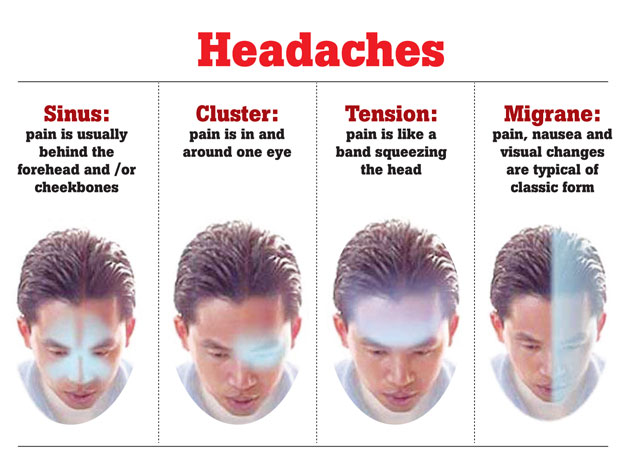
You may prefer a warm compress, Dr. Newman says. Heat can help relax tense muscles, so you can also try taking a warm bath or shower.
3. Drink Up
For around one in three people who have migraine, dehydration is a trigger, according to the American Migraine Foundation. If you’re one of them, staying hydrated may help prevent migraine attacks.
Have trouble drinking enough water? Try flavoring water with a slice of lemon or lime or adding a small amount of fruit juice. When your water tastes better, you may drink more.
What’s more, when you feel migraine coming on, aggressively hydrating may help shorten the attack, says Roderick Spears, MD, endowed chair of migraine and chief of the headache division at Brown University in Providence, Rhode Island.
4. Massage
Massage can relax muscles and reduce stress (another migraine trigger), which is one reason it’s been studied for pain management for several conditions, including headache, according to the National Center for Complementary and Integrative Health.
That said, massage may not work for everyone, Newman says. If you are extremely sensitive to touch during a migraine attack, a massage can make you feel worse. This is especially true for people with allodynia, a fairly common symptom of migraine that causes sensitivity to touch and other stimuli that aren’t typically painful.
According to the American Migraine Foundation, allodynia can make even normal activities, such as brushing your hair or resting your head on a pillow, very painful.
5. Try Meditating
As many as 8 in 10 people with migraine report stress as a trigger, says Rebecca Wells, MD, an associate professor of neurology at Wake Forest University School of Medicine in Winston-Salem, North Carolina, and director of their comprehensive headache program.
Mindfulness meditation can help ease stress, because it requires you to focus on what is happening in the moment rather than what may happen in the future, she says.
“One example that is available to everyone is focusing on a sensation, such as the breath,” she says.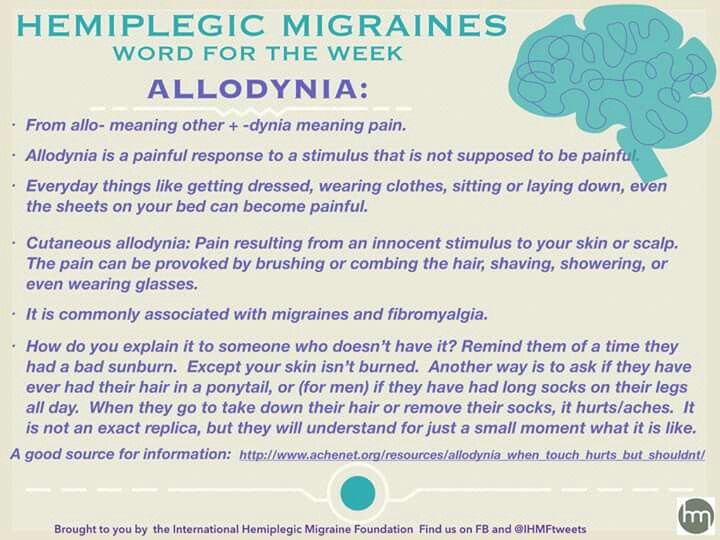 It’s natural to still have thoughts and feelings while practicing mindfulness meditation, so notice those, but then turn your attention back to your breath, suggests Dr. Wells.
It’s natural to still have thoughts and feelings while practicing mindfulness meditation, so notice those, but then turn your attention back to your breath, suggests Dr. Wells.
Researchers are trying to determine if practicing this type of mindfulness can change a person’s ability to respond to stress and help manage migraine. In a study published in 2021 in JAMA Internal Medicine, Wells and her colleagues found that mindfulness meditation may help treat the overall burden of migraine by improving disability, quality of life, and depression.
6. Smell the Lavender
The scent of lavender may have a calming effect, which can also help relieve stress. Lavender essential oil helps reduce stress and anxiety and improve depression symptoms, according to a review of studies published in September 2022 in the journal Molecules.
Lavender oil has also been studied specifically as a migraine treatment. A small study published in European Neurology evaluated the effects of lavender essential oil on people experiencing migraine. In the placebo-controlled trial, those who inhaled lavender oil for 15 minutes had a less severe migraine attack than those who did not sniff lavender.
In the placebo-controlled trial, those who inhaled lavender oil for 15 minutes had a less severe migraine attack than those who did not sniff lavender.
7. Prevent Attacks With Exercise
Exercising during a migraine attack can make the pain worse, but exercising between migraine attacks may help reduce how many you have.
Contrary to popular belief, exercise won’t trigger migraine in most people, says Dale Bond, PhD, director of research integration at Hartford Hospital/HealthCare in Connecticut.
“In terms of aerobic exercise, we would generally tell our patients to start with walking — it’s easy, it’s safe, it’s cheap, and it’s practical — and to do that regularly,” says Dr. Bond.
Regular exercise can also help reduce stress and improve sleep, according to the Centers for Disease Control and Prevention.
The Bottom Line
When used together with medication, these home remedies and lifestyle strategies work for many people, Newman says. If these tips don’t ease your pain, though, talk to your doctor about making changes to your treatment plan.:max_bytes(150000):strip_icc()/when-to-see-a-doctor-for-a-fever-770768_FINAL-5c05c20ec9e77c0001e07722.png)
Additional reporting by Becky Upham.
What to Do When You Feel a Migraine Starting
CS-Blog
Cedars-Sinai Blog
Sep 21, 2022
Cedars-Sinai Staff
If you’ve had a migraine, you know just how debilitating the pain can be. You may feel like you’d do anything to make the pain go away—and stay away.
But you don’t actually need to do anything drastic. Some simple steps can lessen the blow of migraine symptoms. And a few lifestyle changes may help you reduce the frequency and severity of migraine headaches.
If migraine symptoms continually interfere with your usual activities, you may need specialized care, says Dr. Nasima Shadbehr, a neurologist at the Cedars-Sinai Headache Clinic, which offers patients a comprehensive evaluation and targeted treatment.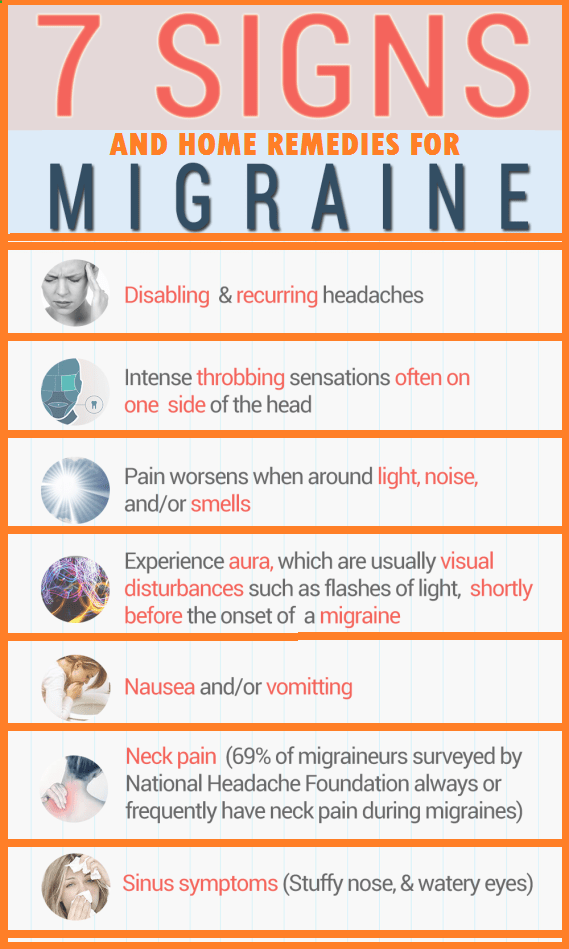 Dr. Shadbehr shares additional insight into migraines below.
Dr. Shadbehr shares additional insight into migraines below.
Neurology
“Often, people may feel afraid to take medications for migraines, but medications can lose their effectiveness if you wait too long to take them.”
What is a migraine?
A migraine is a type of headache that causes a pounding or beating pain. The pain is typically on one side of your head. It can last for several hours or even days. Your migraines may be so intense that they disrupt your usual activities.
Signs a migraine is starting
Head pain is the main migraine symptom. But you may also have other symptoms, such as nausea or sensitivity to light. Often, these symptoms start a few days or hours before you develop a full-blown headache. When you notice these symptoms early, you can take steps to prevent migraine symptoms from worsening.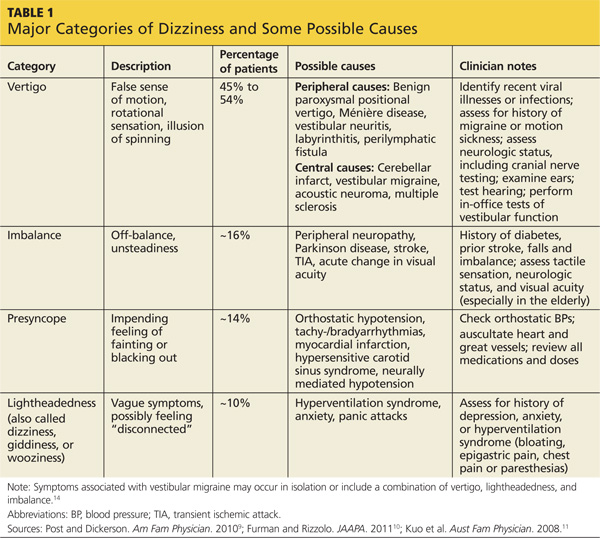
Prodrome phase
Some people experience a prodrome, or “pre-headache,” phase up to several days before developing a migraine. During this period, you may have:
- Difficulty concentrating, reading or speaking
- Fatigue
- Food cravings
- Increased urination
- Light or sound sensitivity
- Nausea
- Sleep disturbances
Aura phase
Up to one in three people who experience migraines also experience aura symptoms. Aura is a term for a group of symptoms that occur before or along with a migraine headache. These symptoms can include:
- Dizziness
- Weakness
- Ear ringing (tinnitus)
- Numbness or tingling
- Speech changes
- Vision changes, including blind spots or seeing bright flashing lights or wavy lines
Aura symptoms can sometimes mimic the symptoms of a stroke, and it is important to seek emergency medical care when experiencing new neurological symptoms. It is also important to talk to your neurologist to better understand migraine aura symptoms and how they can differ from stroke symptoms.
It is also important to talk to your neurologist to better understand migraine aura symptoms and how they can differ from stroke symptoms.
Read: Know Your Headaches
What to do when you have a migraine
If you experience migraines, it’s important to see a neurologist who specializes in headache disorders. A headache specialist can diagnose the type of headache you have and prescribe medications that help control or lessen your symptoms.
When you feel a migraine coming on, the most important thing to do is take your prescribed migraine medication as soon as you notice migraine symptoms, even during the prodrome or aura phases. Don’t wait until you have a pounding headache.
“Often, people may feel afraid to take medications,” notes Dr. Shadbehr, “but medications can lose their effectiveness if you wait too long to take them.”
After you take your medication, try to:
- Drink lots of water
- Lie down in a dark, quiet room
- Take a small amount of caffeine
- Use an ice pack or heating pad on your neck, shoulders or forehead
Can I prevent migraines from starting?
You can’t always control or predict whether you’ll get a migraine. But you can take some steps to prevent migraines.
But you can take some steps to prevent migraines.
“Avoid overusing your medications throughout the month,” Dr. Shadbehr explains. “Try not to take your over-the-counter medications more than 10 days a month to prevent rebound headaches.”
Rebound headaches are caused by medication overuse. When the pain-relieving effects of medicines wear off, your headache comes back. If you’re experiencing migraines more than a few times per month, speak with a headache specialist. They may recommend alternative treatment options to help you avoid medication overuse.
You may also stave off migraines with healthy habits. Try to:
- Avoid skipping meals
- Drink plenty of water
- Exercise regularly, incorporating strengthening and stretching exercises
- Maintain good posture to prevent neck and shoulder tension
Sleep at least eight hours a night with consistent bedtimes and wakeup times
Read: New Treatment Options for Headaches
Keep a headache diary
Dr.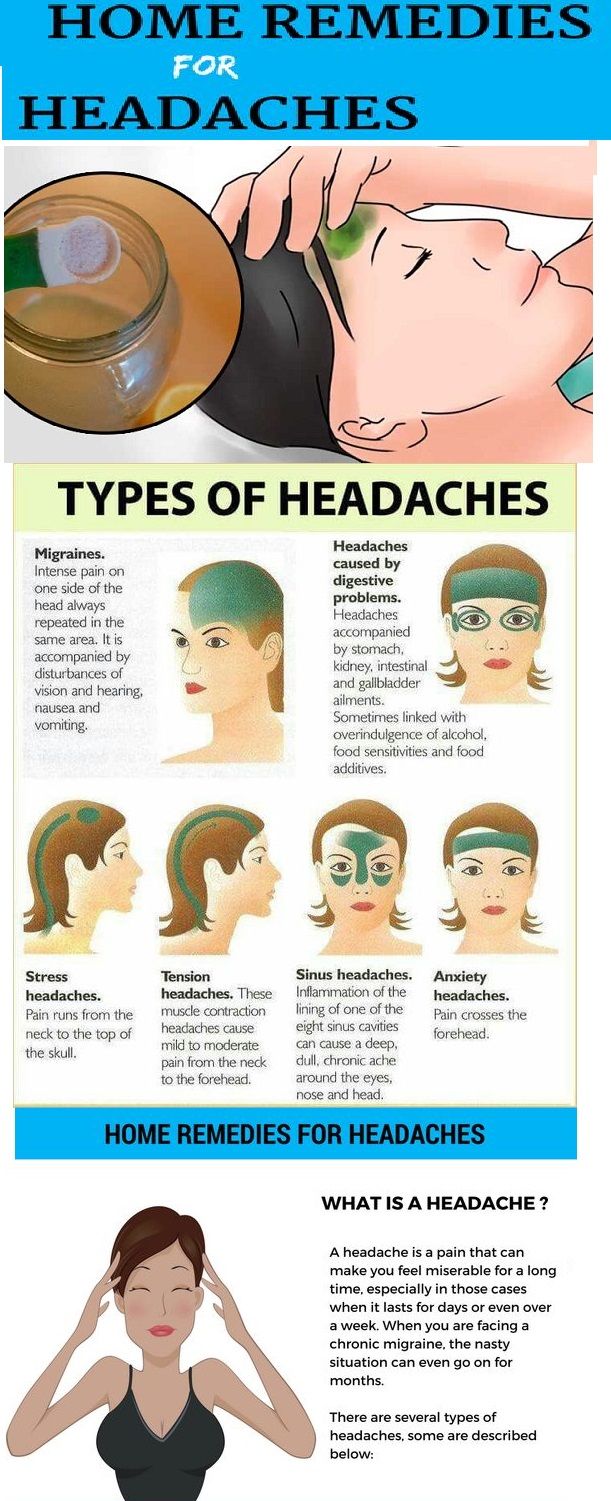 Shadbehr explains that it’s helpful to keep a log of your migraine symptoms so you can identify your triggers.
Shadbehr explains that it’s helpful to keep a log of your migraine symptoms so you can identify your triggers.
“About 20% of people, for example, have food triggers such as red wine, cheese or nitrates,” she says.
A headache diary keeps track of the details around your migraines, such as:
- What you’re doing when migraines start
- How long migraines last
- What helps provide migraine relief
Over time, you may notice patterns in your migraine diary. Maybe you experience migraines after eating certain foods or during certain times in your menstrual cycle. Finding your migraine triggers can help you avoid some of them.
How does stress affect migraines?
Stress is a major migraine trigger for many people. It’s nearly impossible to avoid all stress, but healthy coping techniques can help lower your stress. Try to:
- Adopt a positive mindset
- Manage your time with to-do lists, and let go of less important tasks
- Participate in hobbies you enjoy, such as painting, hiking or playing a musical instrument
- Practice deep breathing or meditation for 10 to 15 minutes a day
- Take regular breaks throughout the day
Visit a therapist or other mental health professional if you need extra support managing your stress or mental health
Read: Managing Migraines Amid COVID-19
Schedule an appointment
It can be challenging to find solutions to your headaches.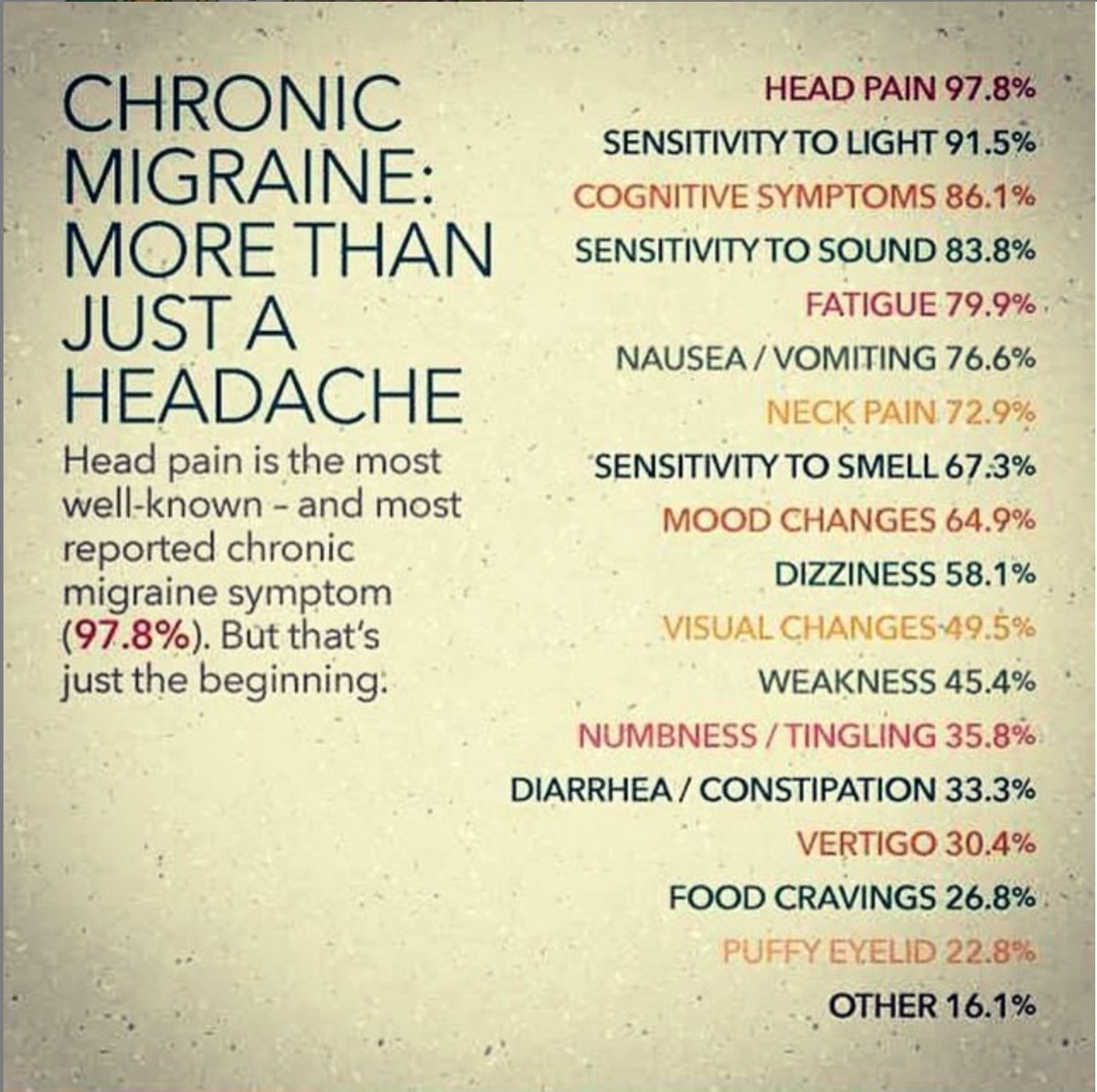 If you experience migraines and haven’t found relief, the Cedars-Sinai Headache Clinic can help. Led by skilled and compassionate headache specialists, the clinic offers a full range of advanced treatment options to help you get back to the activities you love.
If you experience migraines and haven’t found relief, the Cedars-Sinai Headache Clinic can help. Led by skilled and compassionate headache specialists, the clinic offers a full range of advanced treatment options to help you get back to the activities you love.
causes, symptoms, treatment in Moscow – Consultation and examination for migraine – Neurology at Clinic No. 1
Examination and treatment
Migraine is a neurological disease that is accompanied by chronic attacks of headache. The intensity and frequency of attacks varies. The basis of the disease is angioedema. It is impossible to determine the exact cause of seizures. Predisposition at the genetic level, meteorological dependence, susceptibility to external irritants, and other factors can play a role.
Causes of disease development
The reasons may be different and not always obvious. Provoking factors can be:
Provoking factors can be:
- Narrowing of the lumen of arterioles, which leads to impaired blood supply to the brain.
- Stress.
- Malfunctions of the endocrine system.
- Heredity, predisposition to chronic hypertension.
- Overwork.
- External stimuli – noise, vibration and others.
- Great mental and emotional stress.
- In some cases, an attack can be triggered by certain foods (fish, cheese, nuts, etc.).
Symptoms
The main symptom of migraine is headache. The head hurts usually on one side, the nature of the pain is throbbing. Sensations intensify with movement, change of body position. The pain can always be in the same place or change location even within the same attack.
In addition to pain, signs of the disease are:
- Vomiting and nausea without relief.
- Sensitivity change.
- Impaired vision.
- Speech disorder.
- Photophobia.

- Acute reaction to noise, sounds.
These symptoms occur before an attack and are a kind of its harbingers. This phenomenon is called an aura.
Get a headache diagnosis at Clinic #1
- Neurologist appointment
- MRI
- Electroencephalography
- Angiography
With a one-time payment for services – a 20% discount
Call
Types of disease
Migraine can be of several types depending on the nature of the manifestation:
- Migraine without aura.
- Migraine with aura.
- Associative migraine
- With cyclic vomiting.
- Aura without migraine.
- Chronic migraine.
- Other species.
Which doctor should I contact?
If symptoms of migraine appear, the patient should make an appointment with a neurologist. This specialist will help identify the cause of the pain and prescribe the appropriate treatment.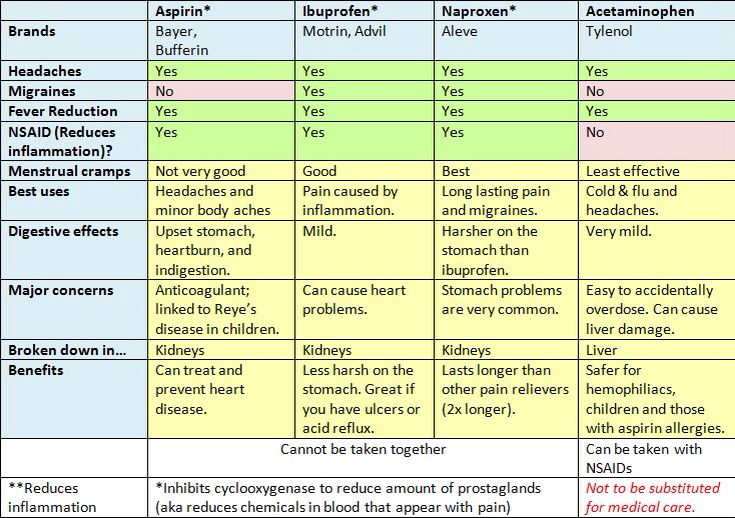 On their own, the patient can only suspect a disease. Often patients confuse migraine with symptoms of other diseases. Attempts to self-medicate can be harmful to health, while the disease will progress and develop into a more serious stage.
On their own, the patient can only suspect a disease. Often patients confuse migraine with symptoms of other diseases. Attempts to self-medicate can be harmful to health, while the disease will progress and develop into a more serious stage.
Diagnostics
To make a diagnosis, the patient is examined and questioned. An accurate diagnosis can only be made if the signs characteristic of migraine are distinguished from the manifestations of other diseases with similar symptoms. As diagnostic measures are carried out:
- MRI.
- Electroencephalography.
- Angiography.
In migraine, examination usually does not reveal any organic cause. Diagnosis is based on symptoms and whether they meet criteria for migraine. Estimated:
- The nature of the pain.
- Its localization, intensity.
- Presence of vomiting and nausea.
- Presence of photophobia.
- The nature of the aura.
Treatment
Migraine pain cannot be relieved with conventional antispasmodics and analgesics. These drugs can only work at the very beginning of an attack. To relieve severe pain, combined preparations are used, the components of which are able to enhance the effect of each other. Mainly applied:
These drugs can only work at the very beginning of an attack. To relieve severe pain, combined preparations are used, the components of which are able to enhance the effect of each other. Mainly applied:
- Combination of acetylsalicylic acid and caffeine.
- Serotonin receptor agnoist drugs.
- Dehydration products.
- Tranquilizers.
- Beta-blockers, calcium channel blockers, and antidepressants may be used prophylactically.
Reception of any drugs should be strictly dosed. Exceeding the prescribed dosage not only adversely affects the body and poses a threat to life, but often increases pain.
Get a headache diagnosis at Clinic No. 1
- Neurologist appointment
- MRI
- Electroencephalography
- Angiography
With a one-time payment for services – a 20% discount
Call
Make an appointment with a neurologist
Visit the consultation of a neurologist offers “Clinic No.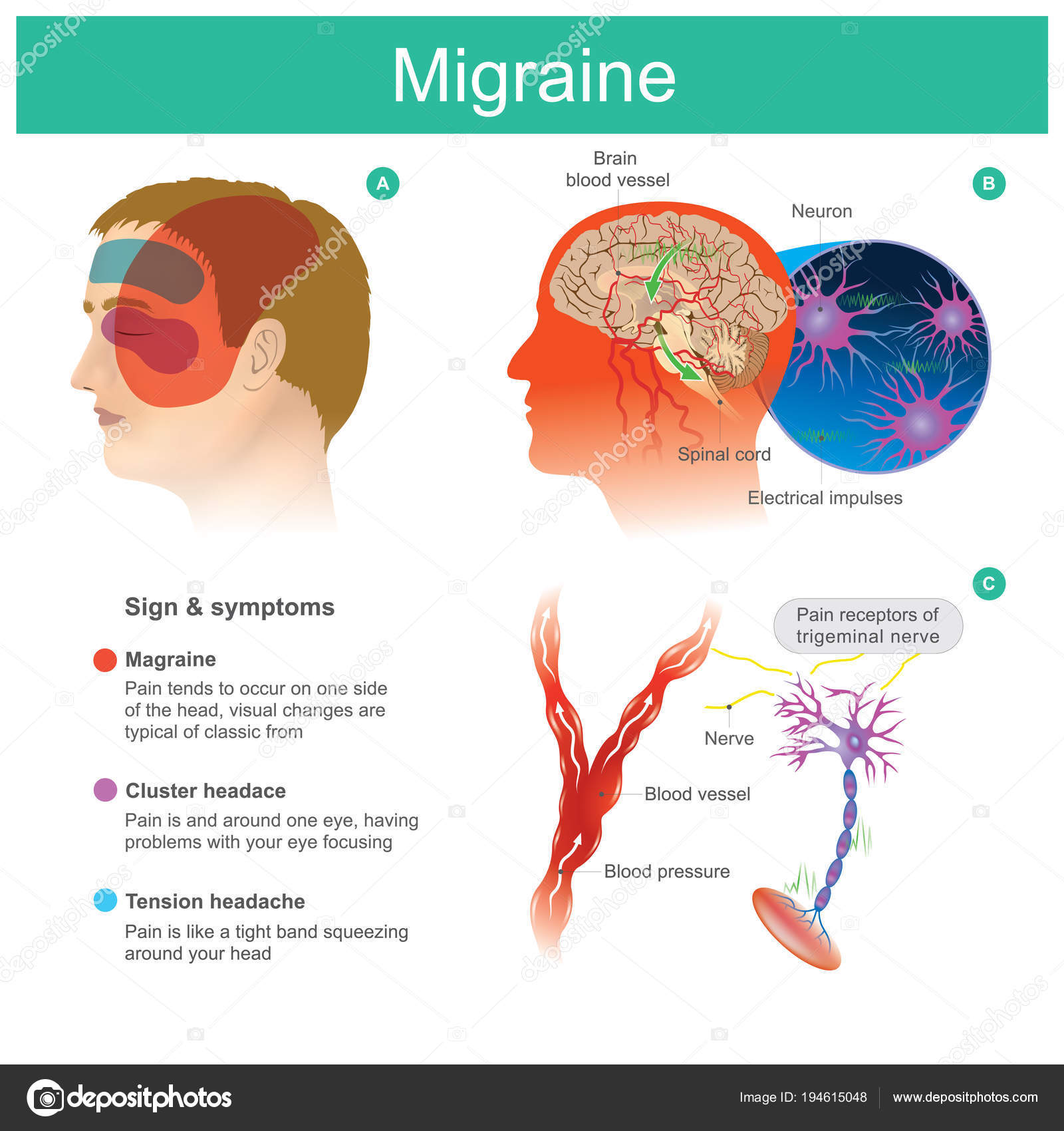 1″ in Moscow. The multidisciplinary medical center is equipped with the latest medical equipment for high-quality diagnostics and treatment of many diseases. Patients are offered comfort and safety, beneficial service programs, and a flexible system of discounts. You can make an appointment by phone or through the form on the website.
1″ in Moscow. The multidisciplinary medical center is equipped with the latest medical equipment for high-quality diagnostics and treatment of many diseases. Patients are offered comfort and safety, beneficial service programs, and a flexible system of discounts. You can make an appointment by phone or through the form on the website.
Moscow, st. Krasnodarskaya, house. 52, bldg. 2
+7 (495) 152-33-19
We work on weekdays and weekends from 8.00 to 21.00
Prices for consultations and appointments with a neurologist
| Service name | Price |
| Free medical consultation after MRI/CT | 0.00 |
| Initial appointment with a neurologist (consultation) | 2200.00 |
| Repeated consultation with a neurologist | 1500. 00 00 |
| Calling a doctor at home | 5180.00 |
Make an appointment with a specialist, without queues, at a convenient time
+7 (495) 641-06-06
Make an appointment
Reviews
Got an appointment with Vyacheslav Mazurov. Many thanks to the doctor for the promptness and clear description of the picture! An excellent doctor, he explained everything, showed everything in the picture,…
Came in for an x-ray of the bones of the nose after an injury: a horse hit his head in the nose. Dr. Vyacheslav Mazurov received me well and kindly, escorted me to the X-ray room,…
Were at the reception of Mazurov Vyacheslav Vitalyevich. I would definitely recommend contacting him. The quality of the examination, the selected treatment, the information content of the reception and …
Rakitina Valentina Nikolaevna
Applied to the Clinic with an injury to the right knee joint. I was pleasantly surprised at how attentively they treated my problem. The receptionist is very attentive,…
I was pleasantly surprised at how attentively they treated my problem. The receptionist is very attentive,…
Tatyana
I often come to the clinic in Lublino, because I live nearby. The manager Olya always greets with a smile. You can consult with her – which doctor is best…
Tatyana
I have been seeing at clinic No. 1 in Lyublino for many years. The manager Olya meets me. Always a smile on her face. Everything will tell you which doctor to go to if you don’t know what exactly …
Tatyana
In clinic No. 1 I do periodic gastroscopy with Korolkov Alexei Grigorievich. You can not be afraid for the consequences of this doctor. The doctor is wonderful. Will meet with…
Tatyana
Operated on Vyacheslav Valeryevich Samoilov’s hip joint. To say that I was afraid is an understatement. This is a business man. On the 4th day I left with crutches already…
Tatyana
I am grateful to Yury Anatolyevich Aksyonov for the operation to strengthen the spine. Kind, caring and knowledgeable doctor. Everything will be told and explained. Very…
Kind, caring and knowledgeable doctor. Everything will be told and explained. Very…
Tatyana
All the time I turn to clinic No. 1 in Lyublino, I live nearby. Many thanks to the doctor Ostanina Alla Anatolyevna for sensitivity, responsiveness, professionalism! I got sick…
Ekaterina
I want to express my gratitude to the doctor of functional diagnostics (ultrasound) – Maslova Alla Nikolaevna. A very attentive and knowledgeable professional. Passed ultrasound of organs…
Sergey Leonidovich
I would like to express my gratitude to Kanevsky Timofey Valerievich. This is not just a doctor, but really a specialist in his hard work! There was an operation on…
Olga Evgenievna
I did Gastro and colonoscopy under anesthesia in the clinic. Doctor: A.G. Korolkov, nurse: S.E. Konovalova A big human “THANK YOU”. Everything is tactful and…
Alina
I liked everything in the clinic!
Svetlana
I liked the appointment with cosmetologist Anastasia Kurbatova very much.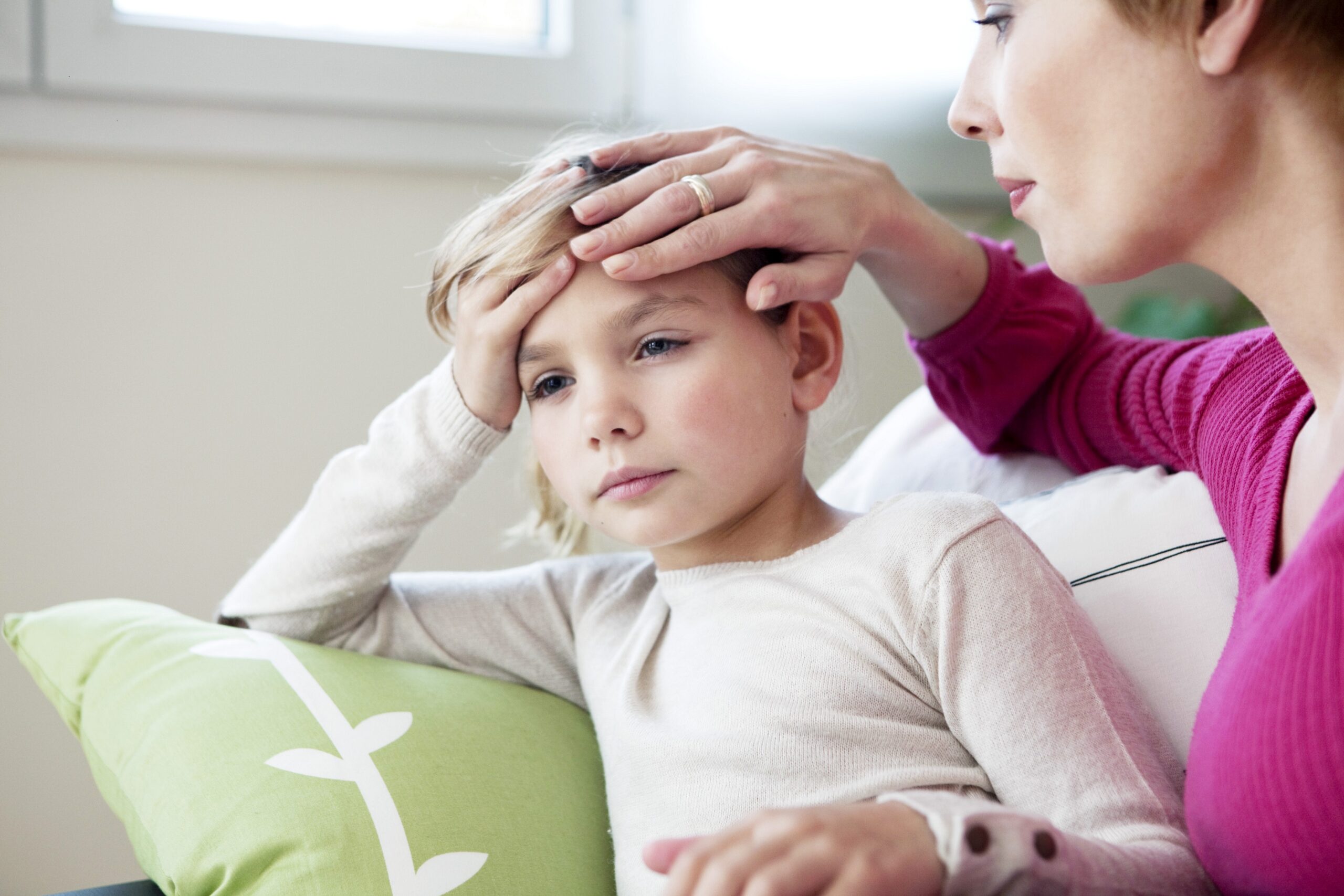 I came for a consultation about transforming my face, but, in the end, I left, having done three procedures at once to…
I came for a consultation about transforming my face, but, in the end, I left, having done three procedures at once to…
Victor
My history in dates. October 23, 2018 – surgery: hip arthroplasty. Oct 25 – First steps with a walker. Oct 28 – walking with two French…
Many thanks to the doctor Ostanina Alla Anatolyevna for sensitivity, responsiveness, professionalism! And Saving the life and health of the patient.
I wish your clinic and…
Lyudmila Grigoryevna
I want to express my deepest gratitude to all the staff of the clinic, and especially to the chiropractor Dmitry Veniaminovich Kotlyarov for the treatment….
Elena Yuryevna
It’s good that such a medical facility as Clinic No. 1 has appeared. I designed a medical book and did not stop being surprised at how competently the work was organized. No…
Appointment
Migraine (headache)
Doctor at Clinic #1
We will call you back as soon as possible
Why does Clinic #1 achieve results in diagnostics?
Correct approach to diagnosis, treatment, rehabilitation, prevention
A unique team of medical practitioners
Professional equipment of the highest level and precision
Comprehensive approach to diagnosis and treatment
Photos of the center of the Clinic
For any questions, please contact
+7 (495) 641-06-06
Map, how to get to us
We will contact you shortly
What to do if you have a migraine: ways to fight
ice stuck in the eye”, “pain that steals my life day by day”: this is how migraine is described by people who have experienced it.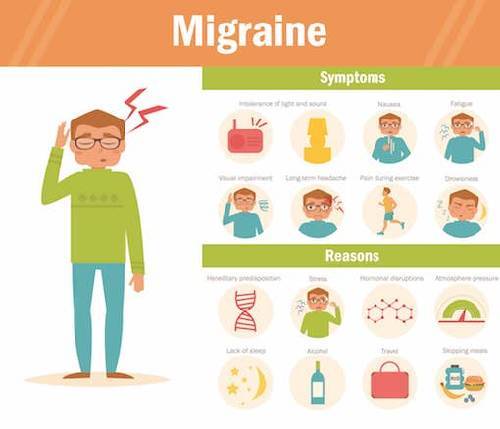 This is not just a headache, but a serious neurological disease that requires treatment and regular visits to the doctor. In Russia, every fifth person suffers from migraines.
This is not just a headache, but a serious neurological disease that requires treatment and regular visits to the doctor. In Russia, every fifth person suffers from migraines.
Tags:
headache
Migraine
Migraine occurs more frequently than diabetes, asthma, and epilepsy combined. Despite the fact that this is a fairly common disease that significantly reduces the quality of life, not all patients know that you can and should consult a doctor with migraine. Headache – the main symptom of migraine – is not considered something serious in society, and even less often considered as a good reason for missing work or important events. At the same time, the statistics are such that every second patient with a migraine attack requires bed rest.
How to recognize a migraine
The most common symptom of a migraine is a severe headache. It refers to primary headaches, that is, it is not caused by any other disorders.
Migraine pain is characterized by a number of characteristic features. Usually only part of the head hurts, the pain is often throbbing, increases with light and sound stimuli, some smells, as well as with the slightest physical exertion. Migraine pain is often accompanied by nausea. Some patients note that they become hypersensitive to touch – bed linen is perceived as a cutting metal, and any clothes press unbearably.
A person may experience only one migraine attack in a lifetime, and five attacks of severe headache with the symptoms described above are grounds for a diagnosis confirming that a person suffers from migraines. Migraine is episodic and chronic. The chronic form is said to be if a person experiences more than 15 attacks per month.
ADVERTISING – CONTINUED BELOW
A migraine attack consists of several stages. A few days or hours before its onset, a person may begin to experience a whole range of symptoms: nasal congestion, drowsiness, weakness appear, it becomes difficult to concentrate on everyday tasks. Light and sound sensitivity develops. Anxiety and irritability increase.
Light and sound sensitivity develops. Anxiety and irritability increase.
Migraine may be preceded by an aura. A person sees flashes of light, iridescent spots – because of such special effects, it becomes difficult for him to see anything. The body may seem too big or too small – its perception of surrounding objects changes. Migraine with aura is experienced by one in five patients, and about 4% experience aura without migraine, in which there is no headache.
Severe pain can last from 4 to 72 hours. Even after migraine pain disappears, the condition continues to be bad. Weakness persists for a long time, and it is impossible to concentrate on household and work affairs for several hours or even days.
Why do migraines appear?
The exact causes of migraine have not yet been identified. Scientists suggest that the cause is the increased excitability of neurons in certain areas of the brain. What this excitability is connected with is not completely clear, but it is known that migraine can be hereditary, and certain triggers provoke the appearance of pain.
The American Association for the Study of Migraine lists the most common triggers: lack of sleep, smoking, alcohol and caffeine use, stress, certain foods. Chocolate, cheese, sausage provoke migraine more often than others.
It is certain that hormones contribute. Migraines are three times more common in women than in men, and 75% of them experience attacks during their periods.
To detect migraine triggers, doctors recommend keeping a diary of headaches, in which it is recommended to write down everything related to migraines: the date they appeared, the foods eaten, weather conditions, the nature of the attack itself. This will help to understand what is the cause of migraine, what could cause it, what medications are effective for migraine. Now you can keep a diary with the help of specially designed applications.
How to treat a migraine?
Thanks to the migraine diary, you can understand what exactly provokes an attack and reduce the likelihood of its occurrence, or at least reduce the severity. Medicines should be selected by a doctor, he must also control how much they help. This means that you need to see a doctor regularly, even if it seems that the migraine has been curbed. Self-medication is dangerous, as well as a complete lack of therapy – the condition may worsen, the pains become more frequent and intense.
Medicines should be selected by a doctor, he must also control how much they help. This means that you need to see a doctor regularly, even if it seems that the migraine has been curbed. Self-medication is dangerous, as well as a complete lack of therapy – the condition may worsen, the pains become more frequent and intense.
Some patients relieve pain with conventional analgesics based on paracetamol and ibuprofen, while others require more serious drugs – triptans, which should be selected by a specialist. Triptans are designed to combat migraine pain. It is considered that the treatment is chosen correctly if the number of days with migraine has been reduced by half or more.
Always carry painkillers with you to help with migraines. You need to carry a few tablets with you, and keep a supply of selected drugs at home.
You need to take the drug at the very beginning of the attack – you do not need to endure the pain, early medication will at least partially cope with migraine pain.

